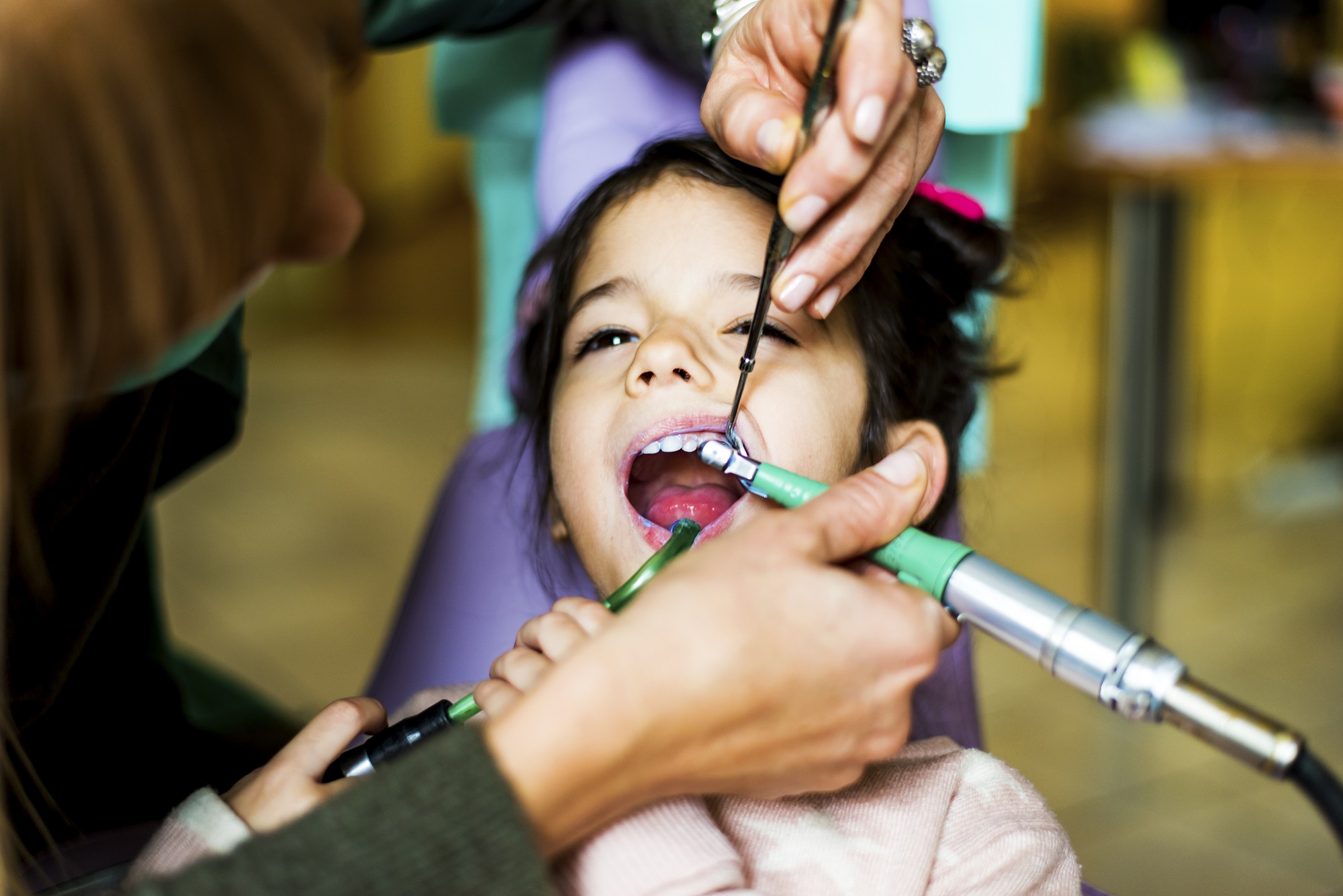
Interceptive Orthodontics is an early approach to orthodontic care that addresses developmental issues before they become complex. By identifying problems in the growing jaws and teeth, we can guide them into proper alignment, reduce treatment time in adolescence, and avoid the need for surgical corrections later.
At Tooth Buddies, our team of pediatric dentists and orthodontists are highly trained in recognizing early signs of misalignment and jaw development concerns. Our child-centered care ensures that treatments are comfortable, effective, and tailored to your child’s unique needs.
A narrow upper jaw can cause crowding of teeth, crossbites, and even breathing difficulties. Maxillary expanders (palatal expanders) are fixed or removable devices used to gently widen the upper jaw over time.
Benefits:
Corrects crossbites and crowding
Enhances facial symmetry
Improves nasal breathing and airway space
Reduces future need for tooth extractions or surgery
The Twin Block is a two-part removable appliance that helps guide the growth of the lower jaw forward. It is ideal for children with a small or retruded lower jaw, which can cause an overbite or “bucked teeth” appearance.
Benefits:
Encourages natural jaw growth
Improves bite and facial profile
Enhances airway function and breathing
Used during active growth periods for best results
Though more limited in use than upper jaw expansion, mandibular expansion helps make space in the lower dental arch. It is especially helpful in preventing crowding of permanent teeth.
Benefits:
Provides room for proper tooth eruption
Reduces lower arch crowding
Improves bite balance with the upper jaw
Usually used in conjunction with other orthodontic devices
Face masks and headgears are orthopedic appliances used to modify jaw growth in children with significant skeletal discrepancies. Face masks pull the upper jaw forward, while headgears can restrain upper jaw growth.
Benefits:
Treats underbites and overbites early
Guides jaw growth in the right direction
Prevents complex orthodontic or surgical needs later
Most effective in children under 10
Designed specifically for children aged 6–10, Invisalign First uses clear, removable aligners to treat early orthodontic issues. These aligners are comfortable and ideal for kids who may not be ready for braces.
Benefits:
Treats crowding, spacing, and bite problems
Virtually invisible and easy to wear
Removable for eating and brushing
Comfortable and customized for growing jaws
Reduces need for extractions or surgical treatments later
Shortens future treatment time with braces or aligners
Improves self-confidence and speech development
Supports healthy jaw development and airway function
10 FAQs about Breathing Issues and Underdeveloped Jaws:
Breathing, especially through the nose, is essential for proper jaw growth. Nasal breathing helps maintain the tongue's position against the roof of the mouth, which is vital for expanding the upper jaw.
Mouth breathing alters the natural position of the tongue, preventing it from supporting the upper jaw's growth. This can lead to a narrow upper arch and a recessed lower jaw.
Common causes include nasal congestion (from allergies or infections), habit, or underlying conditions like enlarged tonsils or adenoids.
Yes, chronic mouth breathing can affect the entire facial structure, leading to a "long face" appearance, a narrowed jaw, and other facial malformations.
An underdeveloped jaw can lead to misalignment of teeth, crowding, increased risk of overbite or open bite, and potentially speech and breathing difficulties.
Yes, a narrowed upper jaw and a recessed lower jaw can create a smaller airway, potentially leading to breathing difficulties, snoring, and even sleep apnea.
Addressing the underlying cause is crucial. This may involve treating nasal congestion with medications, managing allergies, or, in some cases, surgery to remove enlarged tonsils or adenoids.
While jaw growth is largely complete by adolescence, some aspects of facial structure related to mouth breathing can be addressed in adults through orthodontic treatment, surgery, or facial muscle exercises.
The tongue's position and function are critical for proper jaw growth. When the tongue rests against the roof of the mouth during breathing and swallowing, it exerts pressure that helps the upper jaw expand.
Encourage nasal breathing through proper posture, address nasal congestion promptly, and consider seeking professional help if you suspect mouth breathing is a problem.
Maxillary expansion, a common orthodontic procedure, aims to widen the upper jaw. Four main methods are used: Rapid Maxillary Expansion (RME), Slow Maxillary Expansion (SME), Mini Screw Assisted Rapid Maxillary Expansion.Each has its advantages and disadvantages, and the choice depends on the patient's individual needs and age.
Slow Maxillary Expansion (SME):

Rapid Maxillary Expansion (RME):
RME involves using a device with a screw that is tightened to gradually expand the upper jaw by separating the mid-palatine suture.
Faster treatment time compared to SME.
May cause more pain and discomfort, and potential for relapse after expansion if not properly maintained.
Younger individuals with skeletal issues, such as crossbites or crowding, where the mid-palatal suture is still flexible.
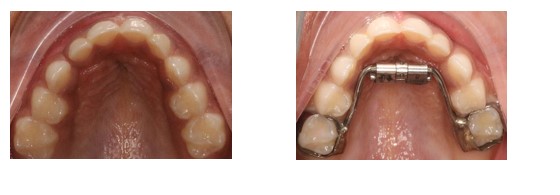
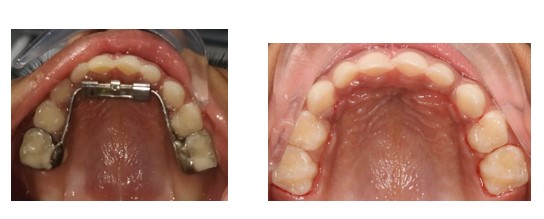
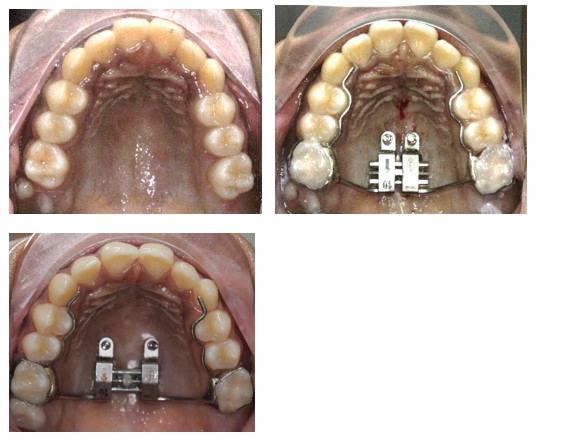
What is Mini Screw Assisted Rapid Maxillary expansion?
MARPE is a non-surgical technique to expand the maxilla (upper jaw) using miniscrews as anchorage for a palatal expansion device.
It's an alternative to traditional rapid palatal expansion (RPE) in adults and young adults whose midpalatal suture has fused.
How does it work?
Who is a good candidate for MARPE?
What are the potential benefits of MARPE?
What are the potential risks and side effects?
What is the treatment process like?
How does MARPE compare to other treatment options?
What are the long-term effects of MARPE?
What is the Twin Block Appliance?
This appliance moves an underdeveloped lower jaw forward to its correct position. This can help to eliminate jaw or TMJ problems as well as other symptoms mentioned above.
Is this fixed or removable?
Twin blocks are removable, making them a convenient option for patients. They are typically worn full-time, except during meals and while brushing teeth. Consistent wear is key to the effectiveness of the treatment.
Is it a one-size fits all device?
Each twin block appliance is custom-made to fit the patient’s mouth, ensuring comfort and optimal function. The design and fit of the twin blocks are tailored to encourage the correct jaw alignment over time.
How Do Twin Block Appliances Work?
Jaw Repositioning:
The primary function of a twin block appliance is to guide the lower jaw forward. This is achieved through the interaction between the upper and lower blocks when the patient closes their mouth. The blocks are angled in such a way that they encourage the lower jaw to move forward, helping to correct the bite.
Growth Modulation:
Twin blocks are particularly effective in children and teenagers because they take advantage of the natural growth phase. By guiding the jaw into a better position during these critical growth periods, the appliance helps in achieving a more balanced facial profile and proper bite alignment.
Bite Correction:
Over time, as the jaw adjusts to the new position, the bite gradually improves. The appliance helps to align the upper and lower teeth correctly, which can also enhance the overall appearance of the smile and improve oral function, such as chewing.
Benefits of Using Twin Block Appliances
Non-Invasive Treatment:
Unlike some other orthodontic procedures that may require surgery or more invasive interventions, twin blocks offer a non-invasive solution to correct jaw misalignments. This makes them a preferred option for many patients, especially younger ones.
Effective for Growth:
Twin blocks are most effective when used during the growth phase, typically between the ages of 8 and 14. By taking advantage of this growth period, the appliance can lead to significant improvements in jaw alignment and facial structure.
Improved Facial Profile:
By correcting the alignment of the jaws, twin blocks can help improve the patient’s facial profile. This not only contributes to better oral health but also enhances aesthetic appearance, giving patients greater confidence in their smile.
Enhanced Functionality:
Proper jaw alignment is crucial for effective chewing, speaking, and overall oral function. Twin block appliances help to create a more harmonious bite, reducing the risk of future dental problems such as uneven wear on teeth or temporomandibular joint (TMJ) disorders.
Relatively Quick Results:
Compared to other orthodontic treatments, twin blocks can produce noticeable results relatively quickly, often within 9 to 12 months of consistent use. This timeline can vary depending on the severity of the jaw misalignment and the patient’s adherence to wearing the appliance.
What to Expect During Treatment?
Initial Fitting:
During the initial fitting, your orthodontist will take impressions or digital scans of your teeth to create a custom twin block appliance. Once the appliance is ready, you’ll have a follow-up appointment to ensure it fits correctly and comfortably.
Adjustments and Follow-Ups:
Regular follow-up appointments are necessary to monitor progress and make any needed adjustments to the appliance. Your orthodontist may make small modifications to ensure the twin blocks continue to guide your jaw correctly as it moves into its new position.
Wearing Schedule:
It’s important to wear the twin block appliance as directed by your orthodontist, usually full-time, except during meals and oral hygiene routines. Consistent wear is critical to achieving the best results in the shortest amount of time.
Adapting to the Appliance:
It may take a few days to a couple of weeks to fully adjust to wearing the twin block appliance. Initially, you might experience some discomfort or difficulty speaking, but this typically resolves as you get used to the appliance.
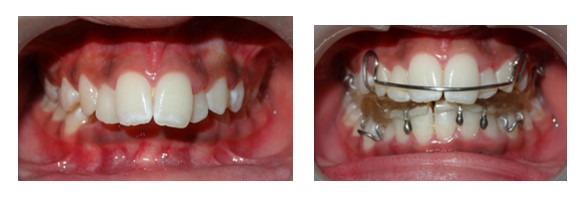
What is mandibular expansion, and why is it needed?
Mandibular expansion is a procedure that widens the lower jaw (mandible). It's often used to address issues like:
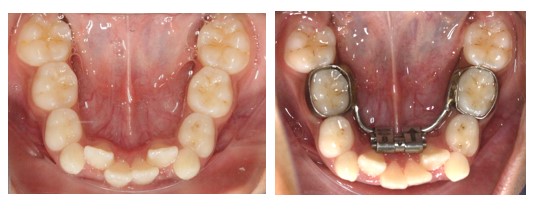
How is mandibular expansion performed?
Several methods can be used, including:
Orthopedic appliances:
These devices (like the Schwarz appliance or lip bumper) apply pressure to the teeth and bone, gradually widening the arch.
These are cemented on the molars and can be active appliances with a screw or passive appliances harnessing muscle forces. Removable type of appliances can also be fabricated.
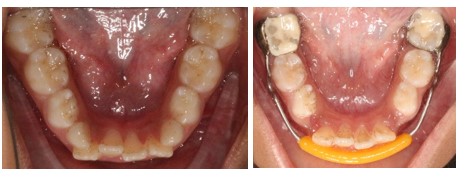
What are the potential side effects or risks?
How long does mandibular expansion take?
The duration varies depending on the method and the amount of expansion needed. Dentoalveolar expansion usually has an active treatment of 3-4 weeks and is retained over 6 -9 months.
What are the long-term effects of mandibular expansion?
Successful expansion can result in:
What is a protraction face mask/ headgear and how does it work?
A protraction face mask, also known as a protraction headgear or reverse pull headgear, is an orthodontic appliance worn by patients to move the upper jaw (maxilla) forward. It works by applying a controlled, outward force to the maxilla, encouraging it to grow forward and improve the relationship between the upper and lower jaws, particularly in cases of a Class III malocclusion (underbite).
On the other hand, high pull headgears work to improve the position an extremely forward upper jaw. These are attached to removable plates that are used in the mouth .
Who is a protraction face mask/ headgear used for, and at what age is it typically used?
Protraction face masks and headgears are typically used for children and adolescents who are still growing and have a underbite/ overbite. The device is most effective during the growth years, as the jaw bones are still developing and can be reshaped.
How long do I need to wear the device , and what are the potential side effects?
The recommended wear time for a protraction face mask/headgear is generally around 12-14 hours per day, and sometimes even more for severe cases. Common side effects include sore teeth, jaw discomfort, skin irritation from the mask, and occasional difficulty sleeping.
How do I care for my teeth and the device while wearing it?
It's important to maintain good oral hygiene while wearing a protraction face mask or headgear.. This includes brushing teeth twice a day, using an alcohol-free fluoride mouthwash, and avoiding sugary snacks or drinks. Avoid eating or rinsing immediately after wearing it to prevent the appliance from getting wet and ensure proper cleaning of the device.
What are the potential long-term effects of protraction face mask /headgear treatment?
Early treatment can lead to significant skeletal and dental changes, improving the relationship between the upper and lower jaws. Long-term studies have shown that protraction face mask therapy can reduce the need for future orthognathic surgery (jaw surgery) in some patients.
What about tooth brushing?
You should remove the headgear to brush your teeth. It is important that you brush your teeth for at least 2 minutes, twice a day. Use a fluoride toothpaste. If possible, carry a brush with you for use after lunch. To further protect the teeth use an alcohol-free fluoride mouthrinse daily at a different time to when you brush your teeth. Avoid eating or rinsing for 20 minutes after use. Sugary snacks/drinks and poor cleaning of your teeth and appliance will lead to permanent damage to your teeth.
Can I eat with the headgear on?
No. It will not be possible for you to eat and drink with the protraction headgear in place. You will need to remove it for meal times. How often do I need an appointment? You will need regular appointments (about every 6-8 weeks) to review the progress of your protraction headgear.
Will I need another brace later?
After treatment with your protraction headgear, it is likely that you will need to have further brace treatment when you are older to straighten your teeth.
Are there any special precautions to be followed?
Yes. Safety is most important, especially when putting the headgear on and taking it off. Your orthodontist will show you how to fit and remove the protraction headgear. You must follow these instructions carefully.

What is Invisalign First and who is it for?
Invisalign First is a system designed to guide young patients through their initial orthodontic treatment. It's typically used to correct minor alignment issues and address potential growth problems, often in children before their permanent teeth have fully come in.
How does Invisalign First work?
Invisalign First uses clear, removable aligners to gently move teeth into their desired positions. The treatment is customized for each patient, with a series of aligners worn for a set period to gradually shift the teeth.
What are the benefits of Invisalign First?
Invisalign First offers several advantages, including a more comfortable treatment compared to traditional braces, the ability to remove the aligners for eating and brushing, and a discreet appearance. It can also help prevent future complications, improve bite alignment, and potentially reduce the length of future orthodontic treatment if needed.
How long does Invisalign First treatment take?
The treatment time varies depending on the individual's needs and the severity of the issues being addressed. Generally, Invisalign First treatment can take anywhere from a few months to a year or more, but it's often a relatively shorter duration than a full orthodontic treatment.
What should I expect during treatment with Invisalign First?
Patients will need to attend regular check-up appointments to monitor progress and receive new sets of aligners as needed. They will also need to wear the aligners for the recommended amount of time each day, which may involve some initial adjustments to the diet and hygiene routine.
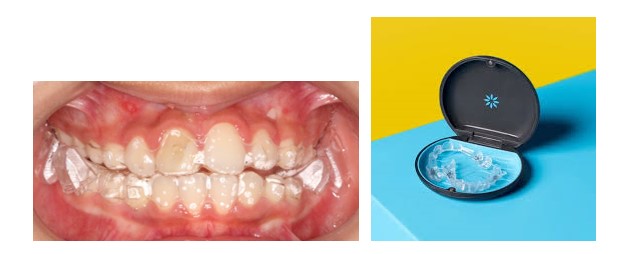
What do I need to understand before opting for Invisalign first for my child?
It is important to understand the treatment duration, commitment to maintenance and care, treatment cost, if the kind of malocclusion will be corrected by aligners or not, potential discomfort, alternative options and no treatment. With all this in mind, it is necessary to make an informed decision.
Tooth Buddies delivers quality dentistry with a personalized touch. Each patient is treated with the utmost care, compassion, empathy.
Copyright © 2025 All Rights Reserved.